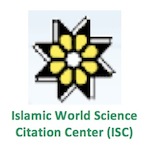Mental Health of House Officers during COVID-19 Pandemic in Malaysia
Medical Students, International Medical University (IMU) Clinical Campus, Malaysia
1Department of Surgery, School of Medicine, International Medical University (IMU) Clinical Campus, Malaysia
2Department of Medicine, ThoughtFull World Pte. Ltd, Malaysia
*Corresponding Author:
Lim Yee Siew, Medical Students, International Medical University (IMU) Clinical Campus,
Malaysia,
Email: keanghee_lim@imu.edu.my
Received: 24-May-2022, Manuscript No. AJOPY-22-54627;
Editor assigned: 25-May-2022, Pre QC No. AJOPY-22-54627 (PQ);
Reviewed: 10-Jun-2022, QC No. AJOPY-22-54627;
Revised: 17-Jun-2022, Manuscript No. AJOPY-22-54627 (R);
Published:
27-Jun-2022, DOI: 10.54615/2231-7805.47254
Abstract
Introduction: The Covid-19 pandemic most certainly impacted the mental health of healthcare professionals in Malaysia.
Aim: The aim of our research is to assess the mental health of house officers in Malaysia during the COVID-19 pandemic and to compare this with the pre-pandemic times.
Method: 122 house officers from 28 hospitals in Malaysia were recruited into the study and completed an online questionnaire of their demographics, including the Depression, Anxiety and Stress Scale 21 items (DASS-21), Satisfaction with Life Scale and Brief Resilience Scale.
Results: Results showed that depression (36.1%), anxiety (33.7%) and stress (23.8%) were all prevalent among house officers with depression being the most prevalent among the three. Majority of the house officers were slightly satisfied with life (30.3%) and most of them had normal resilience (71.3%).
Discussion: We compared our study with 5 other studies from 2010 to 2017 and found similar prevalence in depression, anxiety and stress except for the study in 2017 which showed overall prevalence in depression, anxiety and stress. 8.2% of our subjects recorded extremely severe depression, which is almost twice as much as the two studies we have for comparison.
Conclusion: Housemanship training in Malaysia is indeed a stressful period for junior doctors especially in times of the COVID-19 pandemic. More support systems should be made. ASEAN Journal of Psychiatry, Vol. 23 (4): April 2022:1-12.
Keywords
Mental Health, DASS-21, House Officers, Malaysia, COVID-19 Pandemic
Introduction
House Officers are junior doctors who are undergoing training over a two-year period upon graduating from medical school. The medical internship program is a highly stressful period as they are under pressure to learn and execute a great deal in order to operate independently as medical officers upon completing their internship program [1]. Examples of tasks that induce psychological distress for house officers include night calls, long hours of work with a monotonous nature, less personal time for relaxation, a wage that does not tally with the level of effort the job demands, and inadequate working conditions [2]. House officers are subjected to cognitive impedance and emotional vulnerability and under continuous pressure to function optimally often under a sleep-deprived state. As they become used to the idea of undertaking increased workloads without complaints they often neglect their own needs; this, in turn, makes it difficult for them to seek assistance largely due to the stigma that revolves around mental health. The prevalence of stress, anxiety, and depression was noted to be 29.7%, 39.9%, and 26.2% in a cross-sectional study conducted at 26 Malaysian Ministry of Health Hospitals with a total of 431 medical interns in 2017 [3]. The COVID-19 pandemic caused by the SARS-CoV2 Virus in 2020 adds to mental health problems among healthcare workers and is a cause for concern. In Malaysia, cases were initially reported in January 2020 which dramatically escalated in March and topped in August 2021 [4]. As of 11 November 2021, 2,528,821 confirmed cases of COVID-19; 29,535 cases of deaths and 2,435,459 recovered cases have been reported. Cases of psychological distress and other mental health symptoms such as anxiety and depression continued to worsen especially among House Officers (HO) in Malaysia during this pandemic.
House officers are often assigned as the COVID-19 front liners to manage the outbreak and admit the COVID-positive patients. The front liners dealing with the diagnostic workup of COVID-19, managing emergency conditions, complications or progression to worsening symptoms, having to wear Personal Protective Equipment (PPEs) constantly throughout the day and facing patient’s death on a daily basis at first hand put them under additional tremendous mental and emotional pressure. A study conducted by Rossi et al. reported that doctors in Italy experienced symptoms of post-traumatic stress, depression, anxiety, and increased stress at 49.38%, 24.73%, 19.80%, and 21.90% respectively during the peak incidence of COVID-19 pandemic in the country. This situation was further worsened by the social restrictions and lockdown that prevented outdoor activities [5]. Chronically fatigued doctors with unaddressed mental health problems would negatively impact themselves as well as patient safety thereafter causing derangement in the delivery of healthcare services.
The aim of our research is to study the mental health of house officers in Malaysia during the COVID-19 pandemic and to compare this with the pre-pandemic times.
Methods
This cross-sectional study was done as a part of another study. The research was conducted from 10 April 2021 to 26 July 2021 in 28 Malaysian government hospitals that provided housemanship training. All first and second-year house officers who were competent in the English Language were included in the study. The participants were recruited with a convenient sampling method whereby students approach house officers via IMU Alumni office, facebook live session with Malaysian Medical Association (MMA) Section Concerning House Officers, Medical Officers and Specialists (SCHOMOS) and friend’s recommendation.
A google online questionnaire form involving basic demographics information with measures of five variables: Depression, Anxiety and Stress (DASS-21), Resilience (Brief Resilience Scale) and life satisfaction (satisfaction with life scale) were distributed to all participants via email or WhatsApp messages. English is the only language used in the questionnaire. The primary outcome for sample size estimation will be anxiety. Depression, stress, resilience and satisfaction with life will be our secondary outcomes. The prevalence of these is different.
The study was registered with the National Medical Research Registry (NMRR-21-1049-58495). Ethical approval was obtained from the International Medical University Joint Committee (IMUJC) prior to conducting the research. Approval from Malaysia medical research ethics council is not needed for the study since it does not involve the Ministry of Health’s clinical sites.
Study Instruments
Depression, Anxiety and Stress Scale 21 Items (DASS-21) is a set of three self-report scales used to measure the emotional states of depression, anxiety and stress. Each of the three DASS-21 scales contains 7 items, divided into subscales with similar content. The depression scale assesses dysphoria, hopelessness, devaluation of life, self-deprecation, lack of interest or involvement, anhedonia and inertia. The anxiety scale assesses autonomic arousal, skeletal muscle effects, situational anxiety, and subjective experience of anxious affect. The stress scale is sensitive to levels of chronic nonspecific arousal. It assesses difficulty relaxing, nervous arousal, and being easily upset/agitated, irritable/over-reactive and impatient. Scores for depression, anxiety and stress are calculated by summing the scores for the relevant items.
Some words may need to be explained as it is not commonly used in Malaysia. Some words cannot be changed or rephrased as we will change the reliability and validity. We will add in brackets the alternative explanation according to Macmillan dictionary as below: a) Wind down to end or to finish something gradually; to gradually reduce work before stopping completely; to relax after a period of excitement or worry b) Rather touchy becoming angry or upset very easily; likely to make people angry or upset c) Blue feeling rather sad
The satisfaction with life scale is a 7 point Likert style response scale. The possible range of scores is 5-35, with a score of 20 representing a neutral point on the scale. Scores between 5 to 9 indicate the respondent is extremely dissatisfied with life, whereas scores between 31-35 indicate the respondent is extremely satisfied. The Brief Resilience Scale (BRS) was created to assess the ability to bounce back or recover from stress. The tool asks individuals to decide how much they agree or disagree with six statements. Each answer is allocated a number. Once all six statements have been assessed, the individual can total up their numbers. This summing up will give them an overall resilience score of between 6 and 30.
Sample Size Calculation
We calculated the sample we required using the open-source ‘OpenEpi’ sample size calculator. We estimated there were 10,000 housemen. Supposing the proportion affected with stress anxiety or depression to be 33% and requiring a confidence limit of ± 5% and 80% confidence level, the sample size calculated was 144.
Statistical Analysis
All responses were recorded on google sheet and interpreted with IBM SPSS version 28. Descriptive analysis was performed for demographic details of the respondents and the 5 metrics that were measured in this study. The Chi-square test was used to examine the association between sociodemographic information and the psychological components. The level of statistical significance was set at P<0.05 for all analyses. As part of data cleaning, we applied the standard practice. As part of the standard practice, subjects with missing categorical data were assigned in the ratio of other groups.
Results
A total of 122 house officers participated in this study. The Subject approached was often reluctant to give consent. We recruited 122 house officers from 28 hospitals. Table 1 shows the social demographics of the 122 participants. Most (94.3%) were between 25 to 29 years old. 54.1% of house officers were Chinese. 83.6% were single and all but one were Malaysian.
Table 1: Socio-demographics of house officers (N=122)
| Socio-Demographics |
| Variables |
Frequency, n |
Percentage, % |
| Age |
| 18-24 |
3 |
2.5 |
| 25-29 |
115 |
94.3 |
| 30-34 |
3 |
2.5 |
| 35-39 |
1 |
0.8 |
| Gender |
| Male |
50 |
41 |
| Female |
72 |
59 |
| Ethnicity |
|
|
| Malay |
33 |
27 |
| Chinese |
65 |
54.1 |
| Indian |
24 |
18.9 |
| Number of Posting Completed |
| 1st year (1st to 3rd postings) |
84 |
68.9 |
| 2nd year (4th to 6th postings) |
38 |
31.1 |
| Family Income |
| <RM4360 |
25 |
20.5 |
| RM 4360-RM 9619 |
68 |
55.7 |
| >RM 9619 |
29 |
23.8 |
| Marital Status |
| Single |
102 |
83.6 |
| Married |
20 |
16.4 |
| Graduated University |
| Local Universities |
96 |
79.2 |
| Overseas Universities |
26 |
20.8 |
| Current Working Hospital |
| Peninsular Malaysia |
79 |
63.3 |
| East Malaysia |
43 |
36.7 |
Table 2 shows the data on mental health status scores of the house officers in terms of Depression, Anxiety and Stress Scores. The prevalence of anxiety, depression and stress was 55.7%, 43.4% and 40.2% respectively. A larger number had mild to moderate levels of depression, anxiety and stress but 15.6 % had extremely severe anxiety 8.2% and extremely severe depression. 30.3% of the house officers are slightly satisfied with life but 4.1% are extremely dissatisfied with life. A majority have normal resilience, 71.3%. None of the house officers in our study had high resilience.
Table 2: DASS-21 scores, Satisfaction with Life Scale and Brief Resilience Scale of the Respondents
| Total Respondents |
Depression |
Anxiety |
Stress |
| 122 |
|
|
| Mean ± SD |
2.02 ±1.34 |
2.27 ± 1.47 |
1.77 ± 1.127 |
| Category |
n |
% |
n |
% |
n |
% |
| Normal |
69 |
56.6 |
54 |
44.3 |
73 |
59.8 |
| Mild |
9 |
7.4 |
27 |
22.1 |
20 |
16.4 |
| Moderate |
26 |
21.3 |
14 |
11.5 |
18 |
14.8 |
| Severe |
8 |
6.6 |
8 |
6.6 |
6 |
4.9 |
| Extremely Severe |
10 |
8.2 |
19 |
15.6 |
5 |
4.1 |
Table 3 indicates that there is a significant relationship between age and depression (p=<0.001) but the number of house officers in the youngest age group (18-24) is very small.
Table 3: Satisfaction with Life Scale and Brief Resilience Scale of the Respondents
| Satisfaction with life scale |
| Mean ± SD |
4.17 ± 1.59 |
| Variables |
n |
% |
| Extremely Dissatisfied |
5 |
4.1 |
| Dissatisfied |
17 |
13.9 |
| Slightly Dissatisfied |
25 |
20.5 |
| Neutral |
12 |
9.8 |
| Slightly Satisfied |
37 |
30.3 |
| Satisfied |
20 |
16.4 |
| Extremely Satisfied |
6 |
4.9 |
| Brief Resilience Scale |
| Mean ± SD |
1.71 ± 0.454 |
| Variables |
n |
% |
| Low Resilience |
35 |
28.7 |
| Normal Resilience |
87 |
71.3 |
| High Resilience |
0 |
0 |
Table 4 & 5 indicates that there is a significant relationship between age and depression (p=<0.001) but the number of house officers in the youngest age group (18-24) is very small (Table 6).
Table 4: Association between stress, depression, anxiety, satisfaction with life scale and brief
resilience scale with socio-demographic factors.
| Stress |
| Socio-demographics |
Frequency, n |
| Normal |
Mild |
Moderate |
Severe |
Extreme Severe |
x2 |
df |
p |
| Gender |
|
|
|
|
|
|
|
|
| Male |
33 |
10 |
3 |
2 |
2 |
5.758 |
4 |
0.218 |
| Female |
40 |
10 |
15 |
4 |
3 |
|
|
|
| Age |
|
|
|
|
|
|
|
|
| 18-24 |
2 |
0 |
1 |
0 |
0 |
|
|
|
| 25-29 |
68 |
20 |
16 |
6 |
5 |
9.452 |
12 |
0.664 |
| 30-39 |
3 |
0 |
1 |
0 |
0 |
|
|
|
| Ethnicity |
|
|
|
|
|
|
|
|
| Malay |
18 |
6 |
6 |
1 |
2 |
|
|
|
| Chinese |
45 |
10 |
6 |
3 |
2 |
19.815 |
20 |
0.47 |
| Indian |
9 |
2 |
5 |
2 |
1 |
|
|
|
| Others |
1 |
2 |
1 |
0 |
0 |
|
|
|
| Number of Posting |
|
|
|
|
|
|
|
|
| 1st year |
50 |
14 |
10 |
6 |
4 |
25.569 |
24 |
0.375 |
| 2nd year |
21 |
6 |
6 |
0 |
1 |
|
|
|
| Marital Status |
|
|
|
|
|
|
|
|
| Single |
60 |
17 |
14 |
6 |
5 |
8.192 |
8 |
0.415 |
| Married |
13 |
3 |
3 |
0 |
0 |
|
|
|
| Divorced |
0 |
0 |
1 |
0 |
0 |
|
|
|
| Family Income |
|
|
|
|
|
|
|
|
| <RM4360 |
15 |
5 |
3 |
0 |
2 |
|
|
|
| RM 4360-RM 9619 |
43 |
7 |
13 |
3 |
2 |
10.81 |
8 |
0.213 |
| >RM 9619 |
15 |
8 |
2 |
3 |
1 |
|
|
|
| Depression |
| Gender |
|
|
|
|
|
|
|
|
| Male |
28 |
6 |
9 |
4 |
3 |
3.663 |
4 |
0.454 |
| Female |
41 |
3 |
17 |
4 |
7 |
|
|
|
| Age |
|
|
|
|
|
|
|
|
| 18-24 |
1 |
0 |
0 |
2 |
0 |
33.404 |
12 |
<0.001 |
| 25-29 |
67 |
9 |
24 |
6 |
9 |
|
|
|
| 30-39 |
1 |
0 |
2 |
0 |
1 |
|
|
|
| Ethnicity |
|
|
|
|
|
|
|
|
| Malay |
16 |
1 |
9 |
4 |
3 |
|
|
|
| Chinese |
44 |
7 |
11 |
3 |
1 |
28.084 |
20 |
0.107 |
| Indian |
6 |
1 |
5 |
1 |
6 |
|
|
|
| Other |
3 |
0 |
1 |
0 |
0 |
|
|
|
| Number of posting |
|
|
|
|
|
|
|
|
| 1st year |
46 |
8 |
17 |
7 |
6 |
24.331 |
24 |
0.443 |
| 2nd year |
22 |
1 |
8 |
0 |
3 |
|
|
|
| Marital status |
|
|
|
|
|
|
|
|
| Single |
57 |
8 |
23 |
7 |
7 |
12.255 |
8 |
0.14 |
| Married |
12 |
1 |
3 |
1 |
2 |
|
|
|
| Divorced |
0 |
0 |
0 |
0 |
1 |
|
|
|
| Family income |
|
|
|
|
|
|
|
|
| <RM4360 |
14 |
2 |
5 |
2 |
2 |
|
|
|
| RM 4360-RM 9619 |
36 |
5 |
16 |
5 |
6 |
1.661 |
8 |
0.99 |
| >RM 9619 |
19 |
2 |
5 |
1 |
2 |
|
|
|
| Anxiety |
| Gender |
|
|
|
|
|
|
|
|
| Male |
26 |
11 |
5 |
1 |
7 |
4.126 |
4 |
0.389 |
| female |
28 |
16 |
9 |
7 |
12 |
|
|
|
| Age |
|
|
|
|
|
|
|
|
| 18-24 |
1 |
1 |
0 |
0 |
1 |
|
|
|
| 25-29 |
51 |
25 |
14 |
7 |
18 |
7.098 |
12 |
0.851 |
| 30-39 |
2 |
1 |
0 |
1 |
0 |
|
|
|
| Ethnicity |
|
|
|
|
|
|
|
|
| Malay |
10 |
11 |
4 |
3 |
5 |
|
|
|
| Chinese |
35 |
14 |
8 |
3 |
6 |
22.834 |
20 |
0.297 |
| Indian |
7 |
1 |
2 |
2 |
7 |
|
|
|
| Other |
2 |
1 |
0 |
0 |
1 |
|
|
|
| Number of Posting |
|
|
|
|
|
|
|
|
| 1st year |
33 |
20 |
10 |
8 |
13 |
34.383 |
24 |
0.078 |
| 2nd year |
20 |
7 |
4 |
0 |
3 |
|
|
|
| Marital status |
|
|
|
|
|
|
|
|
| Single |
43 |
21 |
13 |
7 |
18 |
|
|
|
| Married |
10 |
6 |
1 |
1 |
1 |
4.962 |
8 |
0.762 |
| Divorced |
1 |
0 |
0 |
0 |
0 |
|
|
|
| Family income |
|
|
|
|
|
|
|
|
| <RM4360 |
11 |
7 |
2 |
1 |
4 |
|
|
|
| RM 4360-RM 9619 |
29 |
14 |
11 |
3 |
11 |
6.957 |
8 |
0.541 |
| >RM 9619 |
14 |
6 |
1 |
4 |
4 |
|
|
|
Table 5: Satisfaction with life scale and brief resilience scale with socio-demographic factors.
| Satisfaction with life scale |
| Socio Demographics |
Frequency, n |
| Extremely Dissatisfied |
Dissatisfied |
Slightly Dissatisfied |
Neutral |
Slightly Satisfied |
Satisfied |
Extremely Satisfied |
x2 |
df |
p |
| Gender |
|
|
|
|
|
|
|
|
|
|
| Male |
2 |
7 |
8 |
5 |
16 |
10 |
2 |
1.7 |
6 |
0.942 |
| Female |
3 |
10 |
17 |
7 |
21 |
10 |
4 |
|
|
|
| Age |
|
|
|
|
|
|
|
|
|
|
| 18-24 |
1 |
0 |
0 |
0 |
1 |
0 |
1 |
|
|
|
| 25-29 |
4 |
16 |
24 |
12 |
35 |
19 |
5 |
21 |
18 |
0.27 |
| 30-39 |
0 |
1 |
1 |
0 |
1 |
1 |
0 |
|
|
|
| Ethnicity |
|
|
|
|
|
|
|
|
|
|
| Malay |
3 |
4 |
7 |
3 |
10 |
4 |
2 |
|
|
|
| Chinese |
2 |
9 |
13 |
6 |
22 |
12 |
2 |
21 |
30 |
0.884 |
| Indian |
0 |
4 |
3 |
3 |
3 |
4 |
2 |
|
|
|
| Other |
0 |
0 |
2 |
0 |
2 |
0 |
0 |
|
|
|
| Number of posting |
|
|
|
|
|
|
|
|
|
|
| 1st year |
3 |
9 |
20 |
9 |
25 |
14 |
4 |
42 |
36 |
0.216 |
| 2nd year |
1 |
8 |
4 |
3 |
11 |
6 |
1 |
|
|
|
| Marital status |
|
|
|
|
|
|
|
|
|
|
| Single |
4 |
14 |
18 |
10 |
35 |
16 |
5 |
|
|
|
| Married |
1 |
2 |
7 |
2 |
2 |
4 |
1 |
13 |
12 |
0.4 |
| Divorced |
0 |
1 |
0 |
0 |
0 |
0 |
0 |
|
|
|
| Family income |
|
|
|
|
|
|
|
|
|
|
| <RM4360 |
0 |
5 |
5 |
5 |
4 |
2 |
4 |
|
|
|
| RM 4360-RM 9619 |
4 |
8 |
15 |
3 |
23 |
13 |
2 |
20 |
12 |
0.076 |
| >RM 9619 |
1 |
4 |
5 |
4 |
10 |
5 |
0 |
|
|
|
Table 6: Brief resilience scale with socio-demographic factors.
| Brief Resilience Scale |
| Socio-Demographics |
Frequency, n |
|
Low Resilience |
Normal Resilience |
High Resilience |
x2 |
df |
p |
| Gender |
|
|
|
|
|
|
| Male |
12 |
38 |
0 |
0.91 |
1 |
0.34 |
| Female |
23 |
49 |
0 |
|
|
|
| Age |
|
|
|
|
|
|
| 18-24 |
2 |
1 |
0 |
|
|
|
| 25-29 |
32 |
83 |
0 |
2.591 |
3 |
0.459 |
| 30-39 |
1 |
3 |
0 |
|
|
|
| Ethnicity |
|
|
|
|
|
|
| Malay |
8 |
25 |
0 |
|
|
|
| Chinese |
22 |
44 |
0 |
2.676 |
5 |
0.75 |
| Indian |
5 |
14 |
0 |
|
|
|
| Other |
0 |
4 |
0 |
|
|
|
| Number of posting |
|
|
|
|
|
|
| 1st year |
28 |
56 |
0 |
6.387 |
6 |
0.381 |
| 2nd year |
6 |
28 |
0 |
|
|
|
| Marital status |
|
|
|
|
|
|
| Single |
31 |
71 |
0 |
|
|
|
| Married |
4 |
15 |
0 |
1.089 |
2 |
0.58 |
| Divorced |
0 |
1 |
0 |
|
|
|
| Family income |
|
|
|
|
|
|
| <RM4360 |
7 |
18 |
0 |
|
|
|
| RM 4360-RM 9619 |
19 |
49 |
0 |
0.102 |
2 |
0.95 |
| >RM 9619 |
9 |
20 |
0 |
|
|
|
Discussion
We were interested to compare our findings to similar studies done before the COVID-19 pandemic there have been 5 studies on the mental health of house officers that used the DASS questionnaire we were able to compare our data with. The studies dated from 2010 till 2017 and were conducted in various locations, such as one university hospital alone, or in the entire state of Sabah or nationwide like ours. The sample sizes ranged from 89 to 431. There was considerable heterogeneity in the demographics of the studies (Table 7). Our study has the fewest in the 20-24 year age group. All studies had a majority of females and singles. However, some had a majority of Malays while others had a majority of Chinese. The studies in 2010 and 2013 had a majority of foreign university graduates but from 2015 local graduates formed the majority (6-8).
Table 7: Comparison of social demographics of house officers from this study compared with previous related studies.
| Comparison of Social Demographics of 2021 with Previous Studies |
| Authors |
Tan et al |
Kian et al |
Yeoh et al |
Shahruddin et al |
Ismail et al |
Lim et al |
| Year of study |
2010 |
2013 |
2015 |
2015 |
2017 |
2021 |
| Total Respondents |
89 |
167 |
227 |
121 |
431 |
122 |
| (Age Range), % |
(23-28) 89.9 |
(23-25) 45.5 |
(23-25) 33.5 |
- |
(20-25) 24.1 |
(18-24) 2.5 |
| (29-34) 10.1 |
(26-28) 50.9 |
(26-28) 63.0 |
- |
(26-30) 74.0 |
(25-29) 94.3 |
| - |
(29-31) 3.6 |
(29-30) 3.5 |
- |
(31-35) 1.9 |
(30-34) 2.5 |
| - |
- |
- |
- |
- |
(35-39) 0.8 |
| Gender, % |
|
|
|
|
|
|
| Male |
39.3 |
35.3 |
44.1 |
48.4 |
39.7 |
41 |
| Female |
60.7 |
64.7 |
55.9 |
51.6 |
60.3 |
59 |
| Ethnicity, % |
|
|
|
|
|
|
| Malay |
58.4 |
52.7 |
26.4 |
30.8 |
66.1 |
27 |
| Chinese |
25.8 |
20.4 |
55.1 |
29.7 |
20.6 |
54.1 |
| Indian |
11.2 |
26.3 |
7.9 |
7.7 |
10.4 |
18.9 |
| Sabah |
- |
- |
0.9 |
27.5 |
- |
- |
| Sarawak |
- |
- |
9.3 |
- |
- |
- |
| Others |
4.5 |
0.6 |
0.4 |
4.4 |
2.8 |
- |
| Number of Posting Completed |
|
|
|
|
|
|
| Mean ± SD |
- |
- |
- |
2.76 ± 1.8 |
- |
- |
| 1st year, % |
71.9 |
59.9 |
- |
- |
47.3 |
68.9 |
| 2nd year, % |
28.1 |
40.1 |
- |
- |
52.7 |
31.1 |
| Marital Status, % |
|
|
|
|
|
|
| Single |
80.9 |
75.4 |
89.8 |
- |
75.4 |
83.6 |
| Married |
19.1 |
24.6 |
10.2 |
- |
24.6 |
16.4 |
| Graduated University, % |
|
|
|
|
|
|
| Local |
28.1 |
46.7 |
51.5 |
64.8 |
- |
69.7 |
| Universities |
|
|
|
|
|
|
| Overseas |
71.9 |
53.3 |
45.8 |
35.2 |
- |
11.5 |
| Universities |
|
|
|
|
|
|
| Current Working Hospital, % |
|
|
|
|
|
|
| Peninsular Malaysia |
- |
- |
- |
63.7 |
- |
63.3 |
| East Malaysia |
- |
- |
- |
36.3 |
- |
36.7 |
We were able to obtain the breakdown into the severity of depression, anxiety and stress in two of the studies, and of anxiety in a third study (Table 8).
Table 8: Comparison of DASS scores with previous related studies
| Comparison of DASS score results of 2021 with previous studies |
| Authors |
Tan et al |
Kian et al |
Yeoh et al |
Shahruddin et al |
Ismail et al |
Lim et al |
| Year of study |
2010 |
2013 |
2015 |
2015 |
2017 |
2021 |
| Total number of participants |
89 |
167 |
227 |
91 |
431 |
122 |
| DASS type |
DASS-21 |
DASS-21 |
DASS-42 |
DASS- 21 |
DASS- 42 |
DASS- 21 |
| Depression |
|
|
|
|
|
|
| Prevalence, % |
- |
36.5 |
42 |
42.9 |
26.2 |
43.4 |
| Category, % |
|
|
|
|
|
|
| Normal |
- |
63.5 |
- |
- |
73.8 |
56.6 |
| Mild |
- |
16.2 |
- |
- |
10 |
7.4 |
| Moderate |
- |
19.2 |
- |
- |
7.4 |
21.3 |
| Severe |
- |
0.6 |
- |
- |
3.9 |
6.6 |
| Extremely Severe |
- |
0.6 |
- |
- |
4.9 |
8.2 |
| Anxiety |
|
|
|
|
|
|
| Prevalence, % |
60.7 |
60 |
50 |
63.7 |
39.9 |
55.7 |
| Category, % |
|
|
|
|
|
|
| Normal |
39.3 |
40 |
- |
- |
60.1 |
44.3 |
| Mild |
13.5 |
24.6 |
- |
- |
10.7 |
22.1 |
| Moderate |
28.1 |
19.2 |
- |
- |
16 |
11.5 |
| Severe |
3.4 |
9.6 |
- |
- |
4.2 |
6.6 |
| Extremely Severe |
15.7 |
6.6 |
- |
- |
9 |
15.6 |
| Stress |
|
|
|
|
|
|
| Prevalence, % |
- |
25.7 |
42.7 |
57.1 |
29.7 |
40.2 |
| Category, % |
|
|
|
|
|
|
| Normal |
- |
74.3 |
- |
- |
70.3 |
59.8 |
| Mild |
- |
12 |
- |
- |
12.1 |
16.4 |
| Moderate |
- |
12.6 |
- |
- |
9.7 |
14.8 |
| Severe |
- |
0.6 |
- |
- |
5.8 |
4.9 |
| Extremely Severe |
- |
0.6 |
- |
- |
2.1 |
4.1 |
The prevalence of depression ranged from 26.2% to 43.4%. The prevalence of anxiety from 39.9% to 63.7% and for stress from 25.7% to 57.1%. Compared to the other studies, the DASS prevalence for our study during the COVID-19 pandemic was not always the highest. It was highest only for depression and only exceeded the depression prevalence of the next two studies conducted in 2015 by less than 2%. There does not seem to have been an increase in depression, anxiety and stress among house officers according to studies using the DASS scoring system, either the DASS 21 or 42 versions.However, a broad survey of many may overlook the effects on susceptible individuals and it is noteworthy that 8.2% of our subjects recorded extremely severe depression, which is almost twice as much as the two studies we have for comparison.
The study of house officers in the Sarawak General Hospital found that foreign graduates were significantly more likely to suffer from depression, anxiety and stress but this was not seen in other studies. It also found non-Sarawakians were more likely to suffer from anxiety. None of the studies found any significant difference in depression, anxiety and stress for demographic factors like age, sex, ethnicity or marital status. Neither was being in the first nor second year of posting significant [9].
Conclusion
Housemanship training in Malaysia is indeed a stressful period for junior doctors especially in times of the COVID-19 pandemic. Even though the prevalence of depression, anxiety and stress had not much difference compared to pre-pandemic, it is notable that 8.2% of junior doctors were experiencing extremely severe depression during the pandemic which was in need of professional help. This study has also shown that the number of postings is not associated with DASS scores of the junior doctors.
It is crucial for the healthcare professionals and related stakeholders to acknowledge the psychological distress that these junior doctors are experiencing. More support systems should be made available to house officers while alternatives such as text-based mental health coaching applications can be considered for the mental well-being of junior doctors. Further research is needed to study the benefit of using the aforementioned applications in improving mental health among house officers in Malaysia.
References
- Yeoh CM, Thong KS, Seed HF, Nur Iwana AT, Maruzairi H. Psychological morbidities amongst house officers in Sarawak General Hospital Kuching. Med J Malaysia. 2019; 74(4): 307-311.
[Crossref] [Google Scholar]
- Adeolu JO, Yussuf OB, Popoola OA. Prevalence and correlates of job stress among junior doctors in the university college hospital, ibadan. Ann Ib Postgrad Med. 2016; 14(2):92-98.
[Crossref] [Google Scholar] [Indexed]
- Ismail M, Lee KY, Tanjung AS, Jelani IAA, Latiff RA, et al. The prevalence of psychological distress and its association with coping strategies among medical interns in Malaysia: A national-level cross-sectional study. Asia Pac Psychiatry. 2020; 13(2): e12417.
[Crossref] [Google Scholar] [Indexed]
- Mohd Fauzi MF, Mohd Yusoff H, Muhamad Robat R, Mat Saruan NA, Ismail KI, et al. Doctors’ mental health in the midst of covid-19 pandemic: The roles of work demands and recovery experiences. Int J Environ Res Public Health. 2020; 17(19): 7340.
[Crossref] [Google Scholar] [Indexed]
- Spoorthy MS, Pratapa SK, Mahant S. Mental health problems faced by healthcare workers due to the COVID-19 pandemic-A review. Asian J Psychiatr. 2020; 51: 102119.
[Crossref] [Google Scholar] [Indexed]
- Tan SMK, Jong SC, Chan LF, Jamaludin NA, Phang CK, et al. Physician, heal thyself: The paradox of anxiety amongst house officers and work in a teaching hospital. Asia Pac Psychiatry. 2013; 5(S1): 74-81.
[Crossref] [Google Scholar] [Indexed]
- Shahruddin SA, Saseedaran P, Dato Salleh A, Azmi CAA, Alfaisal NHIM, et al. Prevalence and risk factors of stress, anxiety and depression among house officers in Kota Kinabalu, Sabah. Educ Med J. 2016; 8(1): 1-10.
[Crossref] [Google Scholar]
- Choudhry FR, Mani V, Ming LC, Khan TM. Beliefs and perception about mental health issues: A meta-synthesis. Neuropsychiatr Dis Treat. 2016; 12: 2807-2818.
[Crossref] [Google Scholar]
- Lim W, Teoh LY, Seevalingam KKA, Kuppusamy S. COVID-19 pandemic in university hospital: Is there an effect on the medical interns?. Occup Environ Health; 2020.
[Crossref] [Google Scholar]





























